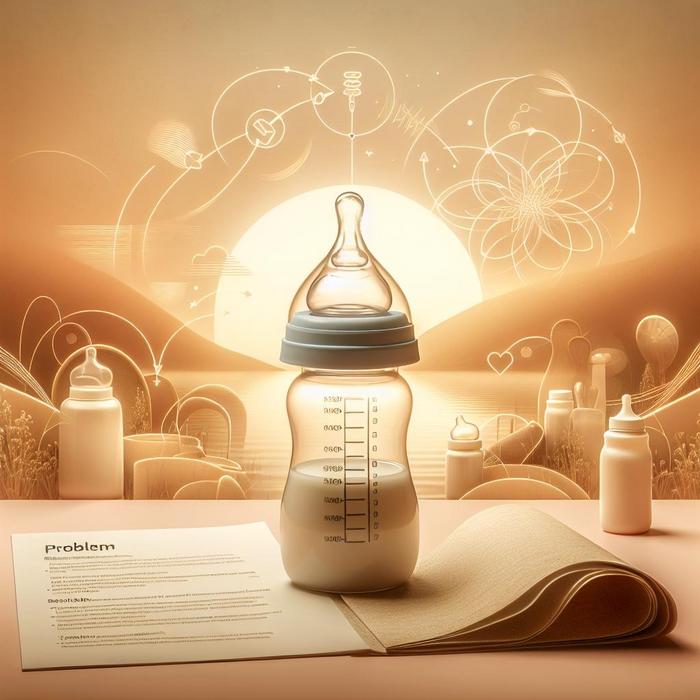Solutions for Common Bottle Feeding Difficulties
Transitioning a baby from breastfeeding to bottle feeding sometimes comes with a hurdle or two. Certain common bottle feeding difficulties are often experienced by new parents. In this post, we’ll explore common issues and provide practical solutions to help both parents and babies on their feeding journey.
Difficulty 1: Baby Refuses the Bottle
One of the common feeding issues parents encounter is the baby’s refusal to take the bottle. This can happen due to a variety of reasons, such as a sudden change in feeding routine, or because the baby prefers the warmth and connection from breastfeeding. This problem can be mitigated by:
- Introducing the bottle in a gradual and patient manner.
- Ensuring that the bottle and nipple mimic the natural breastfeeding process as much as possible. Here at Biomimetic Feeding, we understand the importance of maintaining the breastfeeding bond with the bottle, and we offer bottles designed to mimic the natural experience.
Difficulty 2: Ingesting Air While Feeding
Another common problem is babies ingesting air while bottle feeding. This can lead to discomfort, gas, and fussiness. To prevent this issue:
- Check the bottle’s nipple periodically. If it’s too small, your baby may swallow air.
- Hold the baby in an upright position while feeding.
- Use eco-friendly bottles for breastfed babies that are designed to reduce air ingestion.
Difficulty 3: The Bottle Leaks
Bottle leakage is another common problem that can be messy and frustrating. This often happens if the bottle isn’t assembled correctly. To solve this:
- Ensure the lid is properly fitted to the bottle.
- Inspect the bottle parts for wear and tear regularly.
- Opt for high-quality bottles that are designed to prevent leakage.
Difficulty 4: Tongue Tie
A condition known as tongue tie makes it difficult for some babies to breastfeed, let alone bottle-feed. If you suspect your baby has tongue-tie, seek advice from a healthcare professional. They can provide guidance and treatment, including specific feeding techniques for breastfed babies with tongue tie.
These bottle feeding difficulties can be quite challenging, but remember, don’t stress. Every new parent experiences some hiccups along the way. With patience, persistence, and the right resources, you’ll soon navigate this phase seamlessly.
Difficulty 5: The Baby is not Full
Sometimes, the baby may not feel full even after a complete bottle feed session. This could be due to a slow flow rate of the nipple or because the baby requires more milk. Here’s how you can deal with such issues:
- Use a nipple with a faster flow rate.
- Keeping a chart to monitor baby’s feeding times and quantities can help you understand if the baby is not getting enough milk.
- Discover eco-friendly bottles for breastfed babies that effectively mimic the breastfeeding flow rate.
Difficulty 6: Nipple Confusion
Often, a baby could find it difficult to switch back and forth between the breast and the bottle because of what’s known as nipple confusion. This generally happens due to the difference in nipples’ shape and feel. Here are some solutions:
- Use a bottle nipple designed to feel more like a breast.
- Consistently follow a schedule for swapping breastfeeding and bottle feeding.
- Check out Biomimetic Feeding to learn more about maintaining the breastfeeding bond with bottle feeding.
Difficulties specific to Pets: Feeding orphaned Kittens and Puppies
Bottle feeding difficulties are not unique to human newborns. Orphaned kittens and puppies might also require bottle feeding, and their care has its specific set of issues.
Difficulty 7: Refusal or Inability to Feed
Sometimes, orphaned kittens or puppies may refuse or be unable to feed due to anxiety, medical issues, or simply being unaccustomed to bottle feeding. You may want to explore the suggestions detailed in this guide for specific solutions, which include:
- Trying different bottle types or adjusting nipple size.
- Identifying and addressing any underlying medical issues.
- Feeding in a calm and quiet environment.
Difficulty 8: Feeding Complications Concerning Premature Babies
In special circumstances when dealing with premature babies, bottle feeding can present unique challenges, as these babies may have a weaker sucking reflex or find it hard to coordinate sucking, swallowing, and breathing. You can find guidance in this guide on feeding premature babies, with the main points being:
- Pace feeding to allow the baby to rest.
- Make use of specially designed nipples for premature babies.
- Keep feeding sessions quiet and relaxed.
As we navigate these hitches on the feeding journey, let’s all remember things will get easier with time and practice. Here’s to a happy and healthy feeding experience for both parents and their babies.

